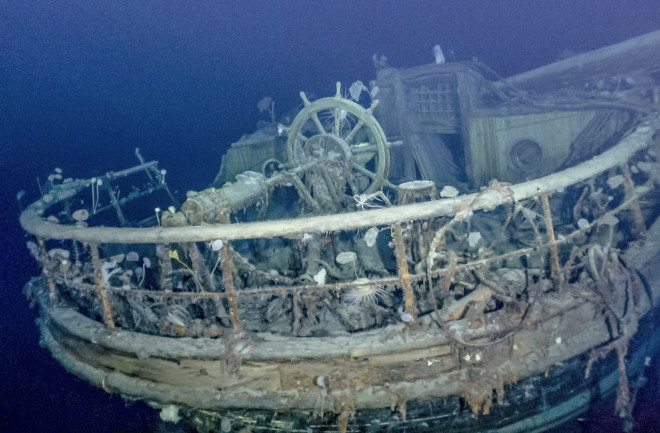This story was originally published in our Jan/Feb 2023 issue as "Shackleton’s Ship Found." Click here to subscribe to read more stories like this one.
In November 1915, polar explorers watched with gut-wrenching dismay as Antarctica’s Weddell Sea swallowed their ship, Endurance. Ice had trapped and crushed the vessel “beyond all hope,” mission leader Sir Ernest Henry Shackleton wrote. Now marooned on floating ice, the 28-man crew drifted from the continent it had hoped to traverse.
What Happened to the Crew of the Endurance?
With supplies dwindling, the explorers paddled lifeboats to a desolate island and survived on seal and penguin meat. Shackleton and a few mates took one of the small boats, James Caird, and sailed over 800 miles across treacherous seas to bring back help.
The crew’s rescue came nine months post-wreck. All survived. Even James Caird made it back to England, where it is still displayed at a school in London. Endurance, however, remained lost — until now.
Read More: Preserved Sunken Ship Found in Shipwreck Alley After 120 Years
When Was Shackleton’s Ship Discovered?
Last February, a team of scientists and other experts embarked in an icebreaker vessel to the spot where the original crew reported Endurance went under. Their mission: Locate the shipwreck, buried beneath the frozen sea.
Even today, cruising the Weddell Sea is a feat, with some areas of its surface over 90 percent frozen in the warmest months. “The ice there is very old and thick and very strong. That’s the reason why Shackleton actually got trapped,” says geophysicist Lasse Rabenstein, chief scientist for the expedition, which was organized by the Falklands Maritime Heritage Trust.
Read More: Looking Back on the Discovery of the Titanic
How Was the Endurance Wreck Found?
Using satellite and meteorological data to plot the course, the expedition maneuvered around the ice floes. When they reached Endurance’s approximate coordinates, the researchers launched a set of state-of-the-art Sabertooth diving drones.
Over three weeks and dozens of dives, these sedan-length submersibles surveyed and filmed the seafloor. In March, they found Endurance in spectacular condition — with its steering wheel, railings and ropes intact — about 4 miles away from the location estimates of the original crew and nearly 2 miles below the surface.
Though Endurance will remain submerged, 3D scans taken at the wreck will help marine archaeologists study the ship’s construction and contents. The expedition “was also a big experiment,” Rabenstein says, allowing researchers to test marine navigation technology and measure sea ice throughout the 35-day voyage. “All of this will feed into scientific data for climatologists and other scientists,” Rabenstein explains.
Read More: Shipwrecks, Volcanic Ash And Lost Cities Come To The Surface In Lake Mead

